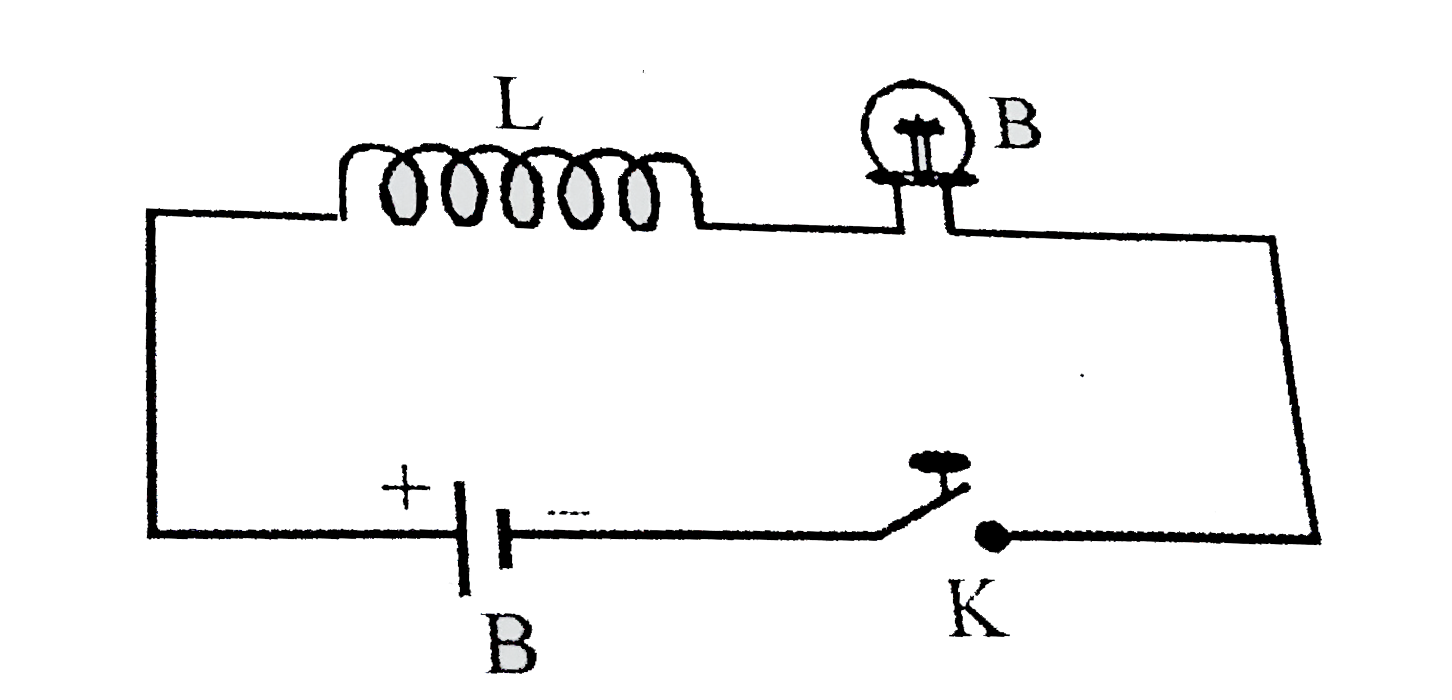In a parallel circuit of bulbs
Same current exists in all the bulbs
Same voltage exists in all the bulbs
Failure of any bulb leads to a break down in the circuit
All of above
To solve the question regarding the characteristics of a parallel circuit of bulbs, we will analyze each option provided in the question step by step.
1. Understanding the Parallel Circuit:
- In a parallel circuit, multiple components (in this case, bulbs) are connected across the same two points of the circuit. This means that each bulb has its own direct path to the voltage source.
2. Evaluating Option 1: "Same current exists in all the bulbs."
- In a parallel circuit, the total current from the battery splits into different branches. Each bulb will have a different current flowing through it (I1, I2, I3). Therefore, this statement is incorrect.
3. Evaluating Option 2: "Same voltage exists in all the bulbs."
- In a parallel circuit, each bulb experiences the same voltage across it because they are connected directly to the same two points of the battery. Thus, this statement is correct.
4. Evaluating Option 3: "Failure of any bulb leads to a breakdown in the circuit."
- In a parallel circuit, if one bulb fails (i.e., breaks), the other bulbs will continue to operate because they have their own separate paths to the voltage source. Therefore, this statement is incorrect.
5. Evaluating Option 4: "All of the above."
- Since options 1 and 3 are incorrect, this statement is also incorrect.
6. Conclusion:
- The correct answer is Option 2, which states that "same voltage exists in all the bulbs."
Summary of Findings:
- Option 1: Incorrect (different currents in each bulb).
- Option 2: Correct (same voltage across all bulbs).
- Option 3: Incorrect (failure of one bulb does not affect others).
- Option 4: Incorrect (not all statements are correct).
Final Answer:
The correct answer is Option 2: Same voltage exists in all the bulbs.
---
- In a parallel circuit, multiple components (in this case, bulbs) are connected across the same two points of the circuit. This means that each bulb has its own direct path to the voltage source.
- In a parallel circuit, the total current from the battery splits into different branches. Each bulb will have a different current flowing through it (I1, I2, I3). Therefore, this statement is incorrect.
- In a parallel circuit, each bulb experiences the same voltage across it because they are connected directly to the same two points of the battery. Thus, this statement is correct.
- In a parallel circuit, if one bulb fails (i.e., breaks), the other bulbs will continue to operate because they have their own separate paths to the voltage source. Therefore, this statement is incorrect.
- Since options 1 and 3 are incorrect, this statement is also incorrect.
- The correct answer is Option 2, which states that "same voltage exists in all the bulbs."
- Option 1: Incorrect (different currents in each bulb).
- Option 2: Correct (same voltage across all bulbs).
- Option 3: Incorrect (failure of one bulb does not affect others).
- Option 4: Incorrect (not all statements are correct).
The correct answer is Option 2: Same voltage exists in all the bulbs.
Topper's Solved these Questions
Similar Questions
What happens to the other bulbs in a parallel circuit if one bulb blows off?
View SolutionTen bulbs are connected in a series circuit to a power supply line. Ten identical bulbs are connected in a parallel circuit to an identical power supply line.
(a) Which circuit would have the highest voltage across each bulb?
(b) In which circuit would the bulbds be brighter?
(c) In which circuit. if one bulb blows out, all others will stop glowing?
(d) Which circuit would have less current in it?
View Solution
Knowledge Check
Assertion : An electric bulb becomes dim, when an electric heater in parallel circuit is switched on.
Reason : Dimness decreases after sometime.AIf both the assertion and reason are true and reason is a true explanation of the assertion.BIf both the assertion and reason are true but the reason is not the correct explanation of assertion.CIf the assertion and reason are falseDIf both the assertion and reason are false.In parallel resonant circuit, at resonance
Acurrent is maximum and impedance is maximumBcurrent is maximum and impedance is minimumCcurrent is minimum and impedance is maximumDcurrent is minimum and pmpedance is minimum
The two electric bulbs of same power are connected in parallel circuit. If one bulb is glowing and then another bulb is switched on, then brightness of the first bulb increases, decreases or remians unchanged. Expalin.
View SolutionWhat happens to the other bulbs in a series circuit if one bulb blows off?
View SolutionWhy does an electric bulb become dim when an electric heater in parallel circuit is switched on? Why does dimness decrease after sometime?
View SolutionWhy an electric bulb becomes dim when an electric heater in parallel circuit is switched on? Why dimness decreases after some time?
View SolutionIn the circuit of Fig, the bulb will become suddenly bright if

View SolutionParallel RC and Parallel RL Circuit
View Solution
